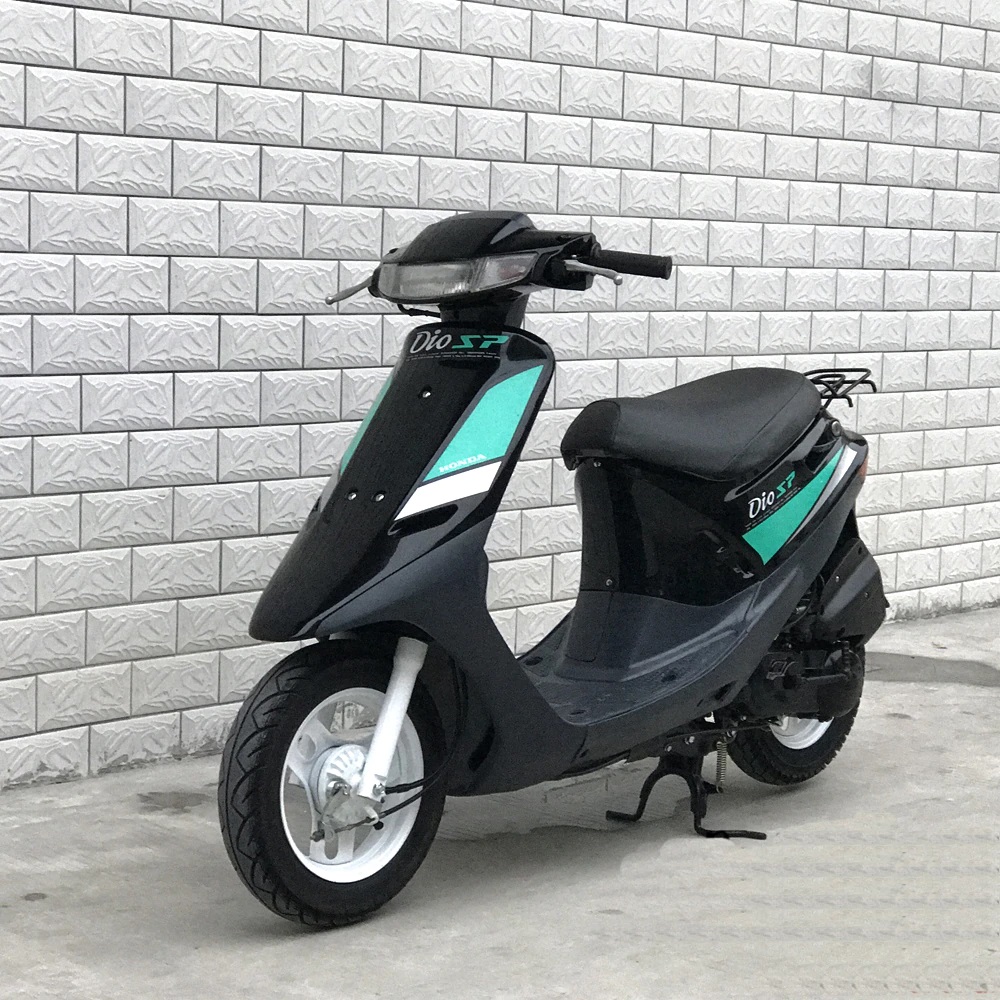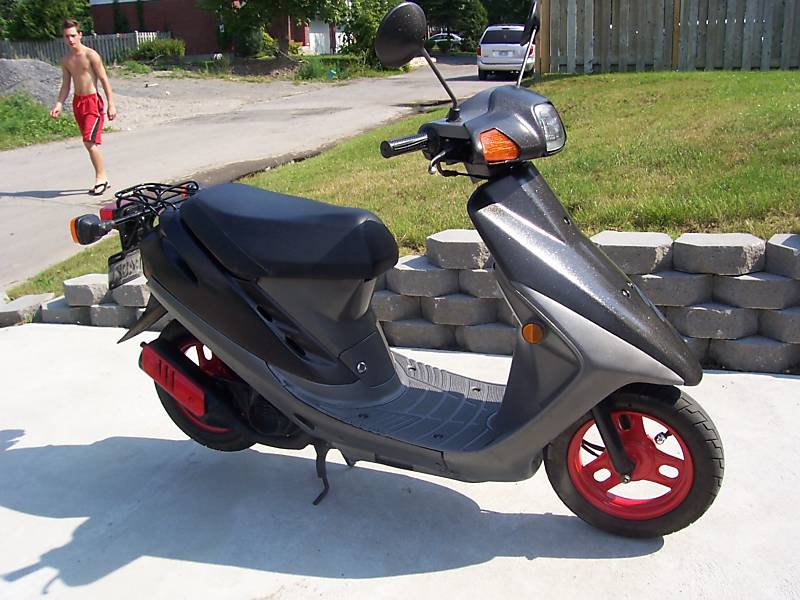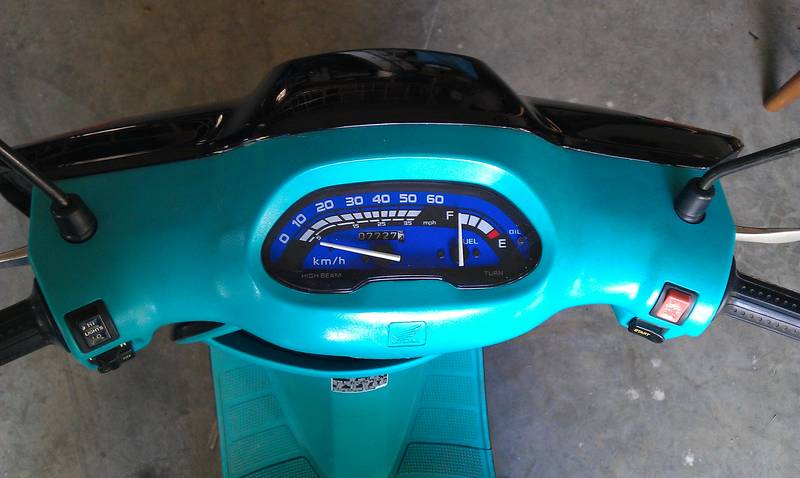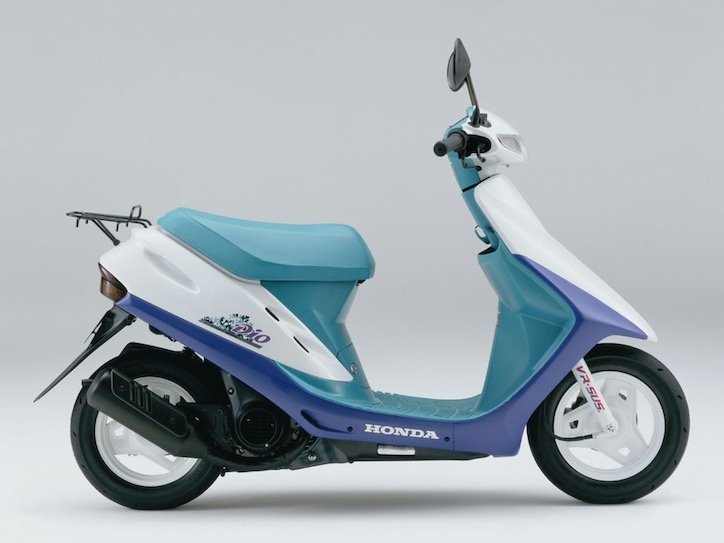HONDA DIO SR (SK50)
For the 1992 model year, Honda brought the globally popular Dio (SK50) to Canada as a successor to the Elite R (SE50). Honda badged this scooter the ‘Dio SR’ for the Canadian market. This was the first and so far only time Canadians were offered a scooter that wasn’t sold in the American market. South of the border Americans were offered the Elite SR / LX (SA50) instead.
The Dio was quite popular and enjoyed a nice run from 1992 until 2001. The Dio was the last 2-stroke scooter sold by Honda in the Canadian market. Overseas a number of different Dio models were sold by Honda in a range of body styles and with a number of different 2-stroke and 4-stroke motor options.
Motor
Unlike its predecessor, the Dio (SK50) did not use the same 2-stroke engine first found in the Aero 50 (and the Elite S / R and Elite LX / SR after that). Instead, the Dio featured a next generation ‘AF18E’ motor. This motor is the same engine that is hugely popular in Asia and thus has a massive aftermarket parts scene. Accordingly, it’s easy and relatively cheap to make your SK50 Dio go ridiculously fast. You can get huge big bore kits (88cc) which can boost your engine to about 125cc when paired with a stroker crankshaft. Parts for the Dio are available all over the place, such as ScooterSwapShop. On the downside, the AF18E is a ‘vertical’ motor which means the cylinder is located on top of the engine and thus reduces storage space under the seat.
American Counterpart
Two years after the Dio hit the Canadian market, Honda updated the 50cc Elite (SA50) sold in the USA by changing the motor to the ‘AF16E’ engine which is very similar to the motor used in the Dio. The AF16E is just slightly detuned vs. the AF18E and usually made in Mexico (rather than Japan).This means the core engine is the same in the ’94 – ’02 SA50 Elite and the Dio SR, but the airbox, carb and mufflers are different. The Dio had the same carb, airbox and exhaust found on the Japanese Dio’s, whereas the ’94 Elite 50 retained the airbox, carb and exhaust (modified to fit) from the previous version of the Elite 50. Dio owners who are looking for aftermarket parts may find some nice parts intended for the SA50 Elite which can be used, but keep in mind the differences.
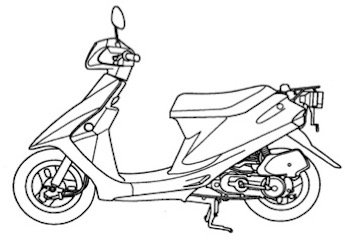
Design & Amenities

The Dio uses drum brakes front and rear, which was pretty standard at that time and offers average braking performance. The brakes aren’t amazing, but the Dio is also quite a light scooter which eases the load on the brakes. At 146 lbs (dry), the Dio is amongst the lightest scooters ever offered in North America. Higher end Dio’s sold overseas commonly had a front disc brake, and these parts are widely available in the aftermarket community.
Comparison
The Dio is hugely popular scooter worldwide (since 1988) and it still enjoys a high level of popularity in many overseas country where modern versions remain on sale. There have been numerous generations and variants overseas, but just the entry level SK50 slipped in Canada from 1992 to 2001. The Dio has been so successful because of its reliable and powerful 2-stroke engine combined with a highly refined and well thought out design that is both practical and stylish.
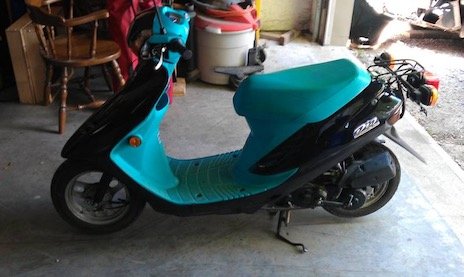
One downside to some of the Dio’s sold is that they came in a curious selection of colors. For some reason, there was a lot of purple and teal Dio’s sold, so you might have to look a bit harder to find a color you like. Yamaha also offered some strange colors (purple, white, yellow) during the Jog years.
The main advantages of the Dio are the unsurpassed underseat storage space and plethora of style and go-fast accessories available for it. The Jog enjoys a strong following as well, but the Asian/JDM scene has been especially adoring of the Dio which has led to the availability of many neat parts.
Pros:
- Proven to be super reliable
- Loads of aftermarket parts
- Peppy (5.6 HP)
- Underseat storage
Cons:
- You’ll be jealous of all the cool versions they get overseas
- Front drum brake
Links:
SK50 Dio Service Manual – Very helpful for working on your Dio (9 MB)
MyScoot – Modifying an SK50 Dio to 85cc
ScooterSwapShop – Aftermarket goodies
MotorscooterGuide Forums – Visit the forum on this site to chat about your scoot.
HondaSpree.net – Great Forum for the Elite 50, Dio and Spree
CMGOnline: Dio vs. BWS 50 – Neat comparison review from 1998.
ScooterTuning.ca – An online scooter shop with many Aero parts
Key Specs (SK50):
- Engine: Air-cooled, 2-stroke single, 49.4cc
- Bore x Stroke: 39.0mm x 41.4mm
- Power: 5.6hp @ 6500 RPM
- Compression Ratio: 7.1 : 1
- Engine Weight: 35.5 lbs
- Carburation: 14mm CV
- Ignition: CDI
- Starting: Electric start and Kick
- Transmission: CVT
- Length: 1650mm (65.0″)
- Width: 645mm (25.4″)
- Height: 990mm (39.0″)
- Wheelbase: 1145mm (46.1″)
- Seat Height: 715mm (28.1″)
- Fuel Capacity: 5L / 1.3 gal.
- Tires: 3.00 x 10″.
- Front Suspension: Telescopic Fork, 2.1″ travel.
- Rear Suspension: Swing unit, single shock, 2.4″ travel
- Brakes: Drum / Drum
- Weight: 146.6 lbs dry / 157.7 lbs wet
Overseas Dio (different headlight array, tires, front disc brake etc):

